
Millipede is a fixed shooter video game released in arcades by Atari, Inc. in 1982. The sequel to 1981's Centipede, it has more gameplay variety and a wider array of insects than the original. The objective is to score as many points as possible by destroying all segments of the millipede as it moves toward the bottom of the screen, as well as eliminating or avoiding other enemies. The game is played with a trackball and a single fire button which can be held down for rapid-fire.
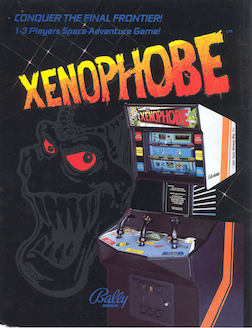
Xenophobe is a video game developed by Bally Midway and released in arcades in 1987. Starbases, moons, ships, and space cities are infested with aliens, and the players have to kill the aliens before each is completely overrun. The screen is split into three horizontally-scrolling windows, one for each of up to three players, yet all players are in the same game world.
Shoot 'em ups are a sub-genre of action games. There is no consensus as to which design elements compose a shoot 'em up; some restrict the definition to games featuring spacecraft and certain types of character movement, while others allow a broader definition including characters on foot and a variety of perspectives.
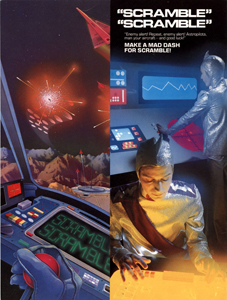
Scramble is a horizontally scrolling shooter arcade video game released in 1981. It was developed by Konami and manufactured and distributed by Leijac in Japan and Stern in North America. It was the first side-scrolling shooter with forced scrolling and multiple distinct levels, and it established the foundation for a new genre.

Defender is a horizontally scrolling shooter developed by Williams Electronics in 1980 and released as an arcade video game in 1981. The game is set on either an unnamed planet or city where the player must defeat waves of invading aliens while protecting astronauts. Development was led by Eugene Jarvis, a pinball programmer at Williams; Defender was Jarvis's first video game project and drew inspiration from Space Invaders and Asteroids. Defender was demonstrated in late 1980, before entering production in early 1981. It was distributed in Japan by Taito.

Robotron: 2084 is a multidirectional shooter developed by Eugene Jarvis and Larry DeMar of Vid Kidz and released in arcades by Williams Electronics in 1982. The game is set in the year 2084 in a fictional world where robots have turned against humans in a cybernetic revolt. The aim is to defeat endless waves of robots, rescue surviving humans, and earn as many points as possible.
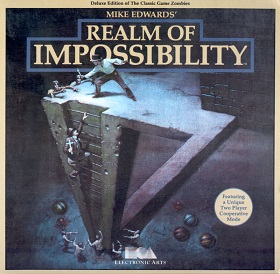
Realm of Impossibility is an action game created by Mike Edwards for Atari 8-bit computers and published by Electronic Arts in 1984. It was originally released in 1983 as Zombies by BRAM, a company formed by Edwards and a friend. BRAM previously developed and published Attack at EP-CYG-4.
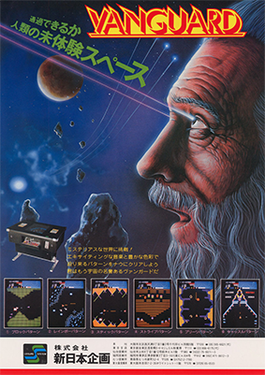
Vanguard is a scrolling shooter arcade video game developed by TOSE. It was released by SNK in Japan and Europe 1981, and licensed to Centuri for manufacture in North America in October and to Zaccaria in Italy the same year. Cinematronics converted the game to cocktail arcade cabinets in North America.
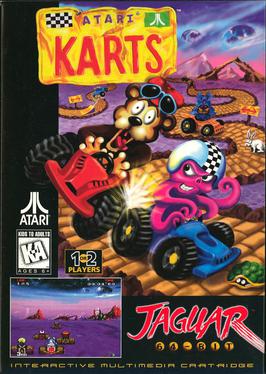
Atari Karts is a kart racing video game developed by Miracle Designs and published by Atari Corporation for the Atari Jaguar in North America on December 22, 1995, and Europe on January 1996. In the game, the players take control of one of several playable characters, each with differing capabilities. One or two players race against computer-controlled characters in four cups consisting of multiple tracks over four difficulty levels. During races, the players can obtain power-ups placed at predetermined points in the tracks and use them to gain an advantage. It plays similarly to Super Mario Kart and features Bentley Bear, main protagonist of the arcade game Crystal Castles (1983).
A side-scrolling video game is a game viewed from a side-view camera angle where the screen follows the player as they move left or right. The jump from single-screen or flip-screen graphics to scrolling graphics during the golden age of arcade games was a pivotal leap in game design, comparable to the move to 3D graphics during the fifth generation.
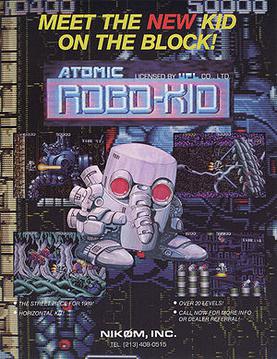
Atomic Robo-Kid (アトミック・ロボキッド) is a horizontally scrolling shooter released in arcades by UPL in 1988. In the US, the game was published by Nikom. The PC Engine version is an adaptation of the arcade original and published as Atomic Robo-Kid Special.
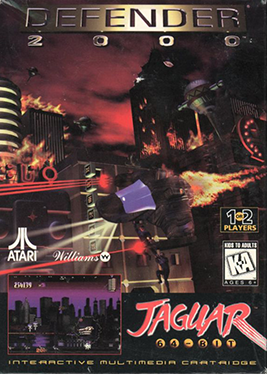
Defender 2000 is a 1996 scrolling shooter video game developed by Llamasoft and published by Atari Corporation for the Atari Jaguar. Part of Atari's 2000 series of arcade game revivals, it is an update of Eugene Jarvis' arcade game Defender (1981). The premise takes place in a future where the Alpha Promixian empire attack mining settlements on distant resource planets. Gameplay is divided into three modes, with the player acting as part of the System Defense Team commanding the Threshold ship to defeat waves of invading aliens while protecting humans.

Dropzone is a horizontally scrolling shooter developed by Archer Maclean for Atari 8-bit computers and published in 1984 by U.S. Gold. It was ported to the Commodore 64, and later released for the Nintendo Entertainment System, Game Boy, Game Gear, and Game Boy Color.

Fire and Ice: The Daring Adventures of Cool Coyote is a platform game created by Graftgold for the Amiga and the Atari ST, released in 1992 by Renegade.
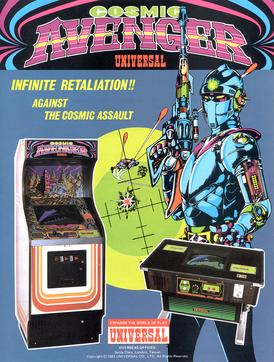
Cosmic Avenger is a scrolling shooter developed by Universal and released as an arcade video game in July 1981. It is part of the first wave shooters with forced horizontal scrolling which followed Konami's Scramble and Super Cobra from earlier in the year. It was released the same month as Vanguard. The final installment in Universal's Cosmic series, players take control of the Avenger space fighter and, as in Scramble, use bullets and bombs against enemy air and ground forces. The world is one continuous level made up of different areas.

Spider-Man is a vertical scrolling action game programmed by Laura Nikolich for the Atari 2600, and released in 1982 by Parker Brothers. It was both the first video game to feature Spider-Man and the first Marvel Comics based video game.

Space Gun is a 1990 first-person shooter arcade game released by Taito. The game is set aboard a crippled space station that has been overrun by hostile alien creatures. The objective is to rescue human crew members while destroying the alien creatures. The game lets the player shoot limbs off the creatures, resulting in blood splatters.
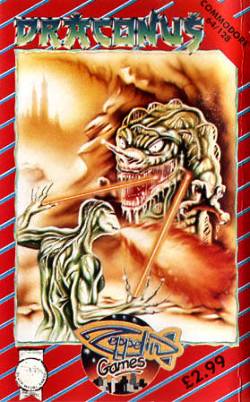
Draconus is an action-adventure platform game developed and published by Zeppelin Games in 1988. It was released for the Atari 8-bit computers, Commodore 64, and ZX Spectrum. Draconus is similar to Metroid.

Yars' Revenge is a video game released for the Atari 2600 in 1982. It was created by Howard Scott Warshaw and is Atari's best-selling original game for the 2600.

Clowns and Balloons is a circus-themed video game written by Frank Cohen for Atari 8-bit computers and published in 1982 by Datasoft. The game was also released for the TRS-80 Color Computer, written by Steve Bjork who had released a similar game called Space Ball for the TRS-80 in 1980. Clowns and Balloons is a clone of the 1977 arcade game Circus. A variant of Breakout, the player moves a trampoline left and right to catch a bouncing clown who pops rows of balloons at the top of the screen with his head.


















